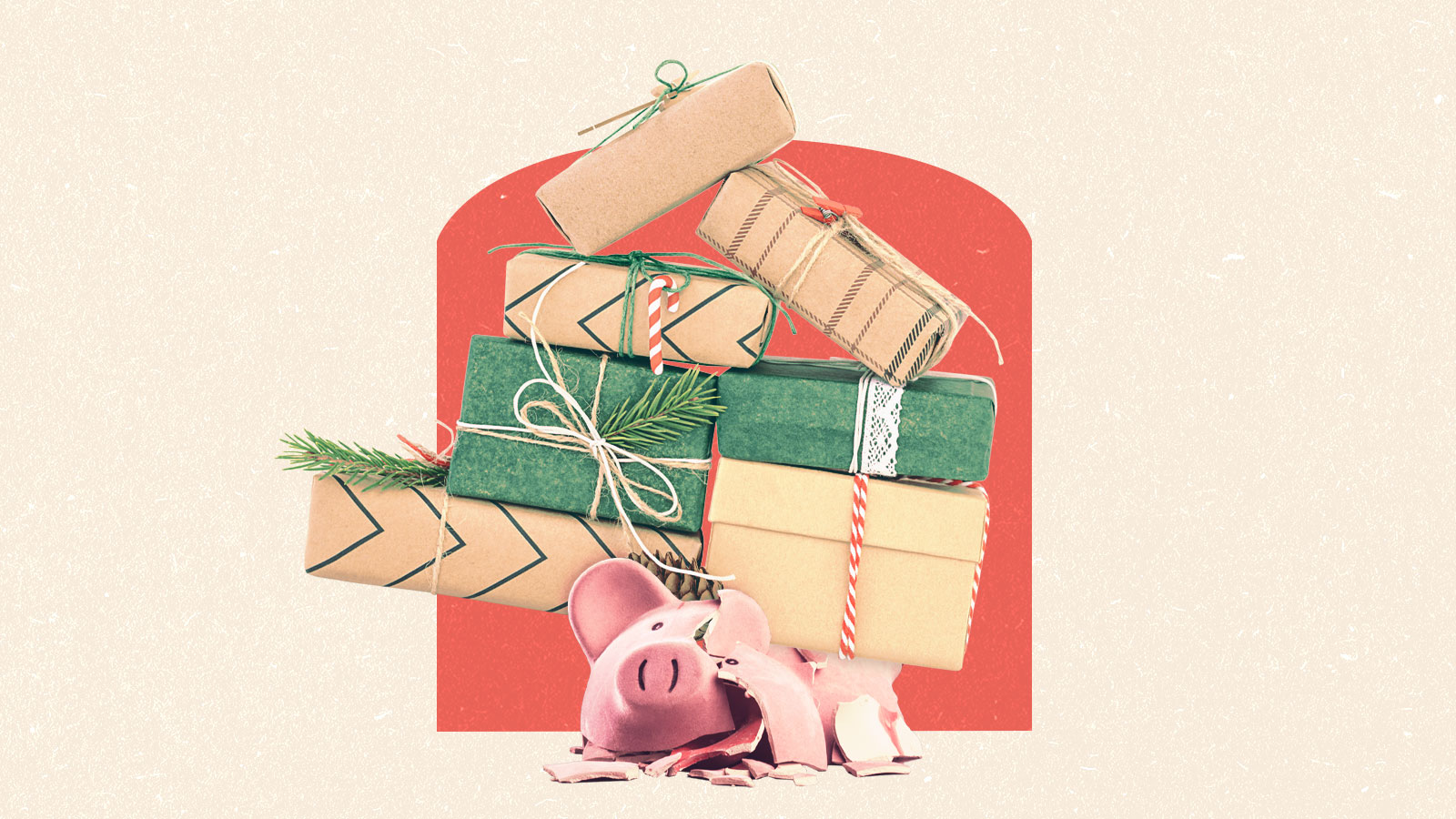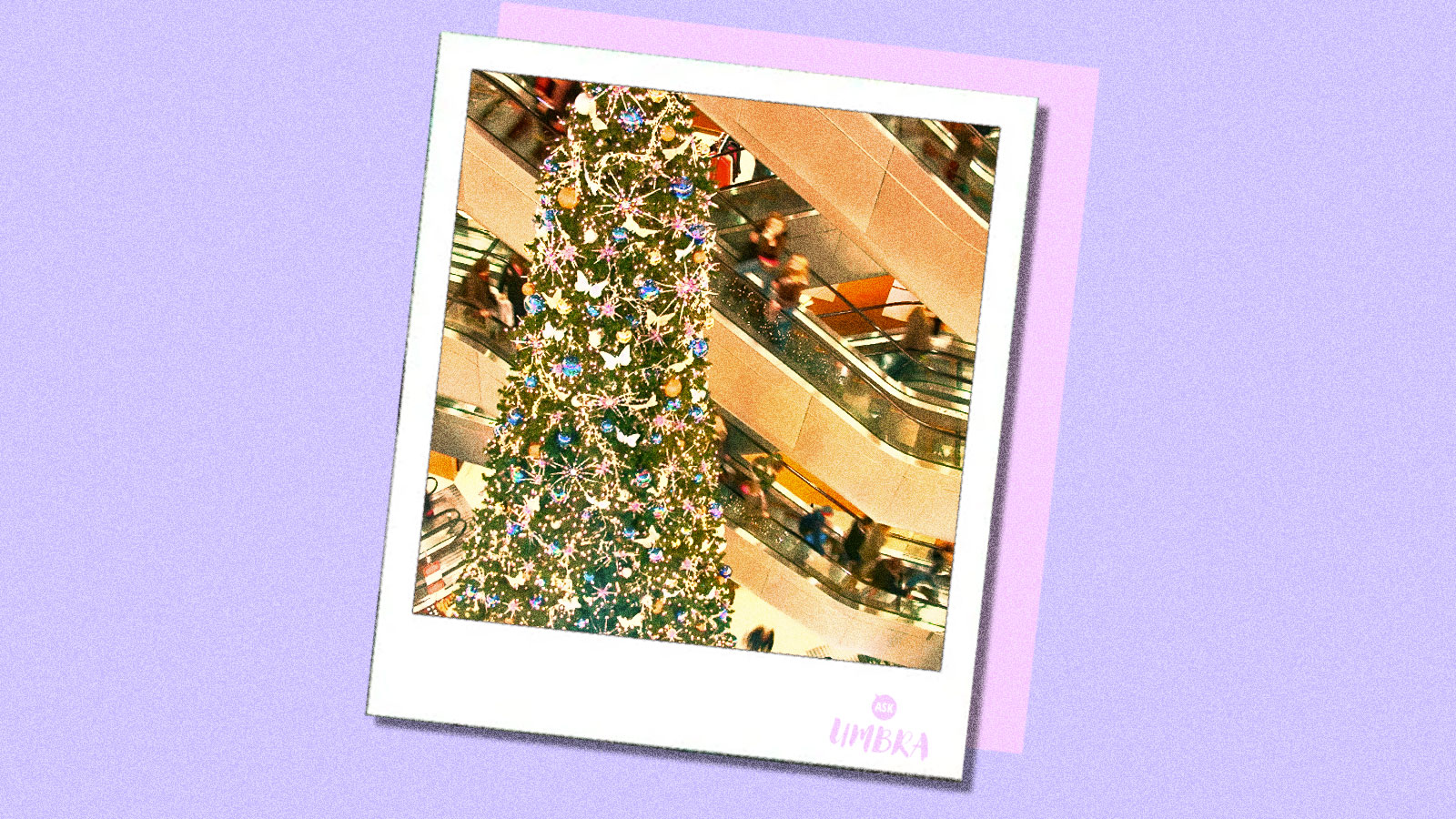You are familiar, I’m sure, with the institution of the gift shop: a business that exists entirely to sell useless treats and temptations, an ode to capitalistic superfluousness. During the weekend before Hanukkah, I found myself in such a place, driven into a state of dissociation by twee mugs and balsam-scented candles. This was how I ended up purchasing a felt pocket of catnip in the shape of a pierogi for my brother’s cat, because the package I was sending to his family in California just felt incomplete without a few extra trinkets.
Normally, I am a woman who is familiar — intellectually, professionally, emotionally — with the many problems brought about by rampant holiday shopping. I know that both the copious buying and receiving of presents often constitutes a source of stress for all parties involved, that shiny wrapping paper and ribbon are a landfill nightmare, that the manufacturing and shipping of billions of goods for a few days’ celebration is both a burden on human workers and the polluted atmosphere. Indeed: the entire contemporary ideal of winter holidays is largely perpetuated by corporations to profit off of manufactured emotions.
One obvious solution that evades most of these environmental and societal ills while still showering love and generosity upon your loved ones is to embrace gifts not bought new: homemade, secondhand, even — gasp! — regifted. It is a technique I personally strive to espouse. In the weeks leading up to Hanukkah, I took significant time and care this year to make personalized drawings in vintage frames for my family members, at my dining room table. (They were nice! I promise.)
And yet I still felt the need to buy a few small things, simply to show that I was also willing to spend money on my loved ones. This is in spite of being well aware that the gratuitous “just because” trinkets are among the worst offenders of gift-giving, as useless as they are unwanted.
What is this force that compels me and millions of others to partake in the service of one very specific holiday ideal: the heap of shiny new presents, all wrapped up with a bow? Is it the consequence of capitalism, of holiday rom-coms, of deeply ingrained relationship dynamics? And more importantly, is it an ideal simply too powerful to subvert?
According to data from the National Retail Federation, a trade organization whose members range from department stores to multi-level marketing operations, 2021 holiday season spending grew by 13.5 percent compared to the previous year, a greater increase than any in the past 20 years. This year, gift spending is expected to grow by another 6 to 8 percent, even in light of the highest inflation rates in 40 years.
The financial services company Bankrate surveyed consumers on how they would stretch their holiday budgets due to inflation. The most popular response was implementing coupons, discounts, and sales (41 percent), closely followed by simply buying fewer gifts (40 percent). The least popular answers were making handmade gifts and buying secondhand items, reported by only 14 and 11 percent respectively.
The reluctance to go with secondhand gifts boils down to how givers think used items will be received, said Julian Givi, a marketing professor at West Virginia University. His research suggests that fear is largely unfounded, driven in no small part by relentless messaging by retailers. “When it comes to used products, recipients are more open to them than givers anticipate,” he said.
As it turns out, the person that gives the gift cares much more about how much it cost than the recipient, contrary to the assumption of Drake’s entire oeuvre. In fact, Givi says that “sentimental” gifts — family heirlooms, handmade gifts, even a simple framed photograph — are almost guaranteed to provide more happiness than a $20 tchotchke thrown into a Target cart in a panic.
Even knowing that from his own research, Givi admitted that he — much like myself! — usually succumbs to the pressure to spend a certain amount on new gifts every year. It’s a sort of prisoner’s dilemma of presents: If everyone else in the family gives an expensive gift, how will I look?
An influential anthropological theory published in 1925 by the sociologist Marcel Mauss presents the practice of gift exchange as the foundation of all peaceful relationships among both individuals and communities. On one hand, it’s a nice idea that acts as a counterpoint to a society dependent on capitalistic commerce; on the other, that’s quite a bit of interpersonal pressure come December.
But Mauss’ theory is grounded in the idea that there is no such thing as a selfless gift, as every gift is given in expectation of some form of equivalent reciprocation. This competitive element to gift-giving – especially the pressure at the holidays to be the most thoughtful, the most generous, the most caring – drives us to spend, even when we don’t want or have to. After all, there’s no simple scale to measure sentimental value or joy or any other merit a gift might have. Why not let currency do the job instead?
But to make matters even more fraught, the factors guiding contemporary gift-giving aren’t just about money. There is also the expectation — particularly in romantic relationships — that the gift in question carry emotional significance. Ralph Waldo Emerson wrote a rather harsh message for those who simply purchase their gifts in one 1844 essay:
The only gift is a portion of thyself … Therefore the poet brings his poem; the shepherd, his lamb; the farmer, corn; the miner, a gem; the sailor, coral and shells; the painter, his picture; the girl, a handkerchief of her own sewing … But it is a cold, lifeless business when you go to the shops to buy me something, which does not represent your life and talent, but a goldsmith’s.
Ralph Waldo Emerson Essays: Second Series, 1844
Emerson’s musings are a full-throated endorsement of the handmade present, to be sure — but to make such a thing requires significant spare time at the very least. If the two acceptable options to show your great affection for another person are extraordinary effort or extraordinary expenditure, I would guess that most people today will opt for the expenditure, since time is an increasingly precious resource in modern life.
But what would it look like if the monetary or sentimental value of a gift weren’t a proxy for the giver’s own self-worth, a way of establishing their place relative to others in a family, community, or society? This is part of the concept behind the Buy Nothing community, in which people in neighborhoods or small regional groups use social media to offer up or ask for goods. In these hyperlocal gift economies, nothing on offer is treated as more valuable than anything else. A diamond ring from a bad relationship should not be seen as worth more than a set of recycled baby food jars. (These are real examples.)
“You have a set of rules in a sharing economy, where you make it abundantly clear that every single gift has the same value,” says Liesl Clark, co-founder of the Buy Nothing Project. “We have had to work really hard at this, working at a flat economy where the true value is the connection between the people, and the wealth is the connections forged between proximal neighbors.”
There are obvious challenges to applying these rules alongside a larger society in which diamond rings and baby food jars do have very different values. But one thing that Clark emphasizes is that the benefits associated with gifts exchanged via Buy Nothing groups often have little to do with those items’ worth in a commerce-based economy. A large pile of firewood from a giver’s property delivered right before a snowstorm cuts all the power to the recipient’s house quickly becomes the most precious thing in the world to that person, but it might have retailed for $19.99 at Kroger.
To that end, we can reread Emerson’s quote with a new takeaway. The poet’s words, the miner’s gem, and the seamstress’s handkerchief would all be priced very differently in a store, but they represent the same value: a piece of oneself, given with love.
Allow me, then, to propose a sort of progressive theory of gift-giving: Try not to focus on what you feel you should give. Above all else, a recipient wants to feel loved and cared for. They do not want to feel burdened or indebted. If these principles — and not an arbitrary sense of competition or obligation — guide one’s choices, I am confident that much of the stress of holiday presents will melt like snow on a lit windowpane.
As for the catnip pierogi — well, the cat loved it. But not significantly more than she loved the wrapping paper and ribbon that came with it.






